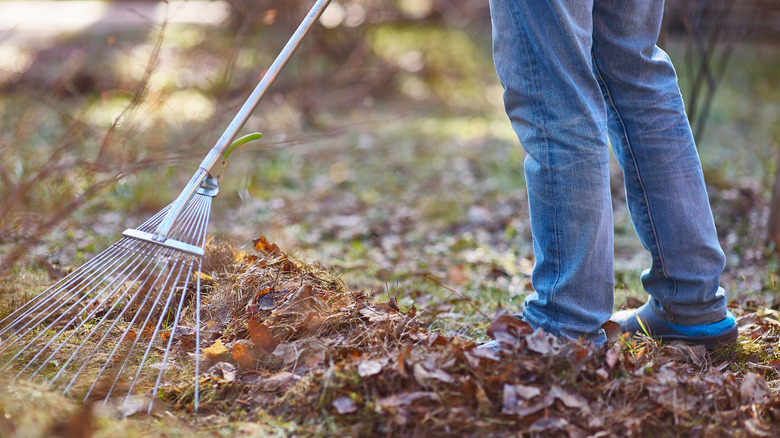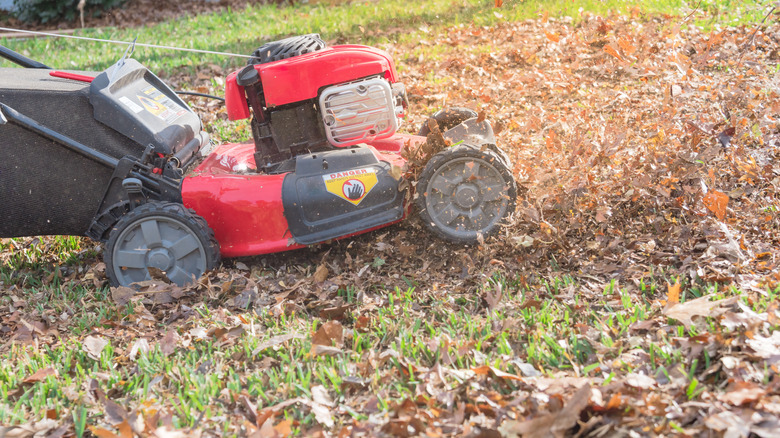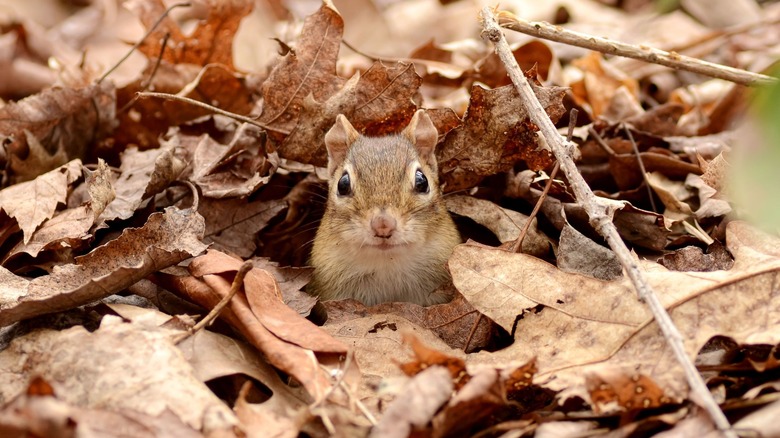Why Raking Leaves Is Actually Bad For The Environment
Autumn brings with it the beauty of changing leaves, and the aftermath: fallen leaves. This process is a part of nature that Britannica describes as an act of self-preservation. While it seems like wind blows the leaves from trees, they actually fall as the result of a hormonal process that is triggered by cooler temperatures. When this process begins, trees reduce the amount of chlorophyll in leaves, which causes the green to drain from them. Trees also stop supplying water and other nutrients to their leaves. This natural process results in the gold and red hues of the fall season. As a final step, the tree begins to grow a protective layer between the twig and the leaf, which causes the leaf to fall as the tree moves toward its dormant stage.
Raking leaves is almost as common as leaves falling, but maybe it shouldn't be. Many believe that leaves shouldn't actually be raked at all, because it is bad for the environment, according to the National Wildlife Federation (NWF).
Leaves provide a natural mulch
The NWF reports that leaves are actually good for the environment in several ways. For starters, they are nature's mulch, and they don't cost a thing. A cover of leaves prevents weeds from sprouting up and provides excellent fertilizer as the leaves decompose wherever they land.
If you put leaves in your flower beds or gardens, it can help preserve soil moisture for the next growing season (via NWF). In addition, if you add leaves to your garden, you probably won't have to fertilize it as often. You can also add leaves to your compost pile, if you have one. The best way to get the most out of fallen leaves in your yard is to go over them with a lawn mower. This way, your grass won't die, and it will still get the nutritional benefits of the decomposing leaves. The best time to mow them is when they are dry, per Gardening Know How.
Fallen leaves are an ecosystem
Another reason you shouldn't rake leaves is because they are contributing to the survival of other animals in the wild. A blanket of leaves is essentially its own ecosystem, according to the NWF. Lots of critters, including chipmunks, toads, box turtles, and shrews, can make a home out of a pile of leaves in the winter. Other species, like butterflies and moths, lay their eggs on fallen leaves, which will spend the winter months on them until it's time to hatch in the spring.
Leaves also provide many birds with a source for food. In fact, according to the NWF, around 96% of the birds in our backyards rely on the aforementioned insect eggs to feed their young. Some birds even hibernate in leaves. The U.S. Department of Agriculture's Forest Service explains that in frigid winter temperatures, eastern red bats retreat to the leaves on the ground to stay warm.


